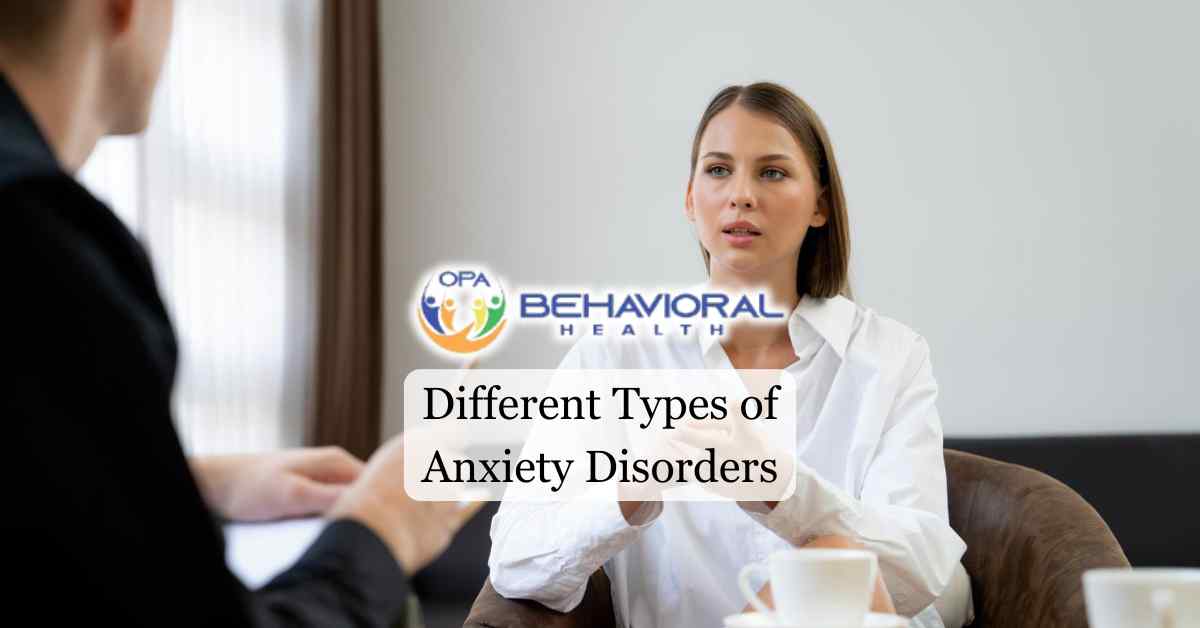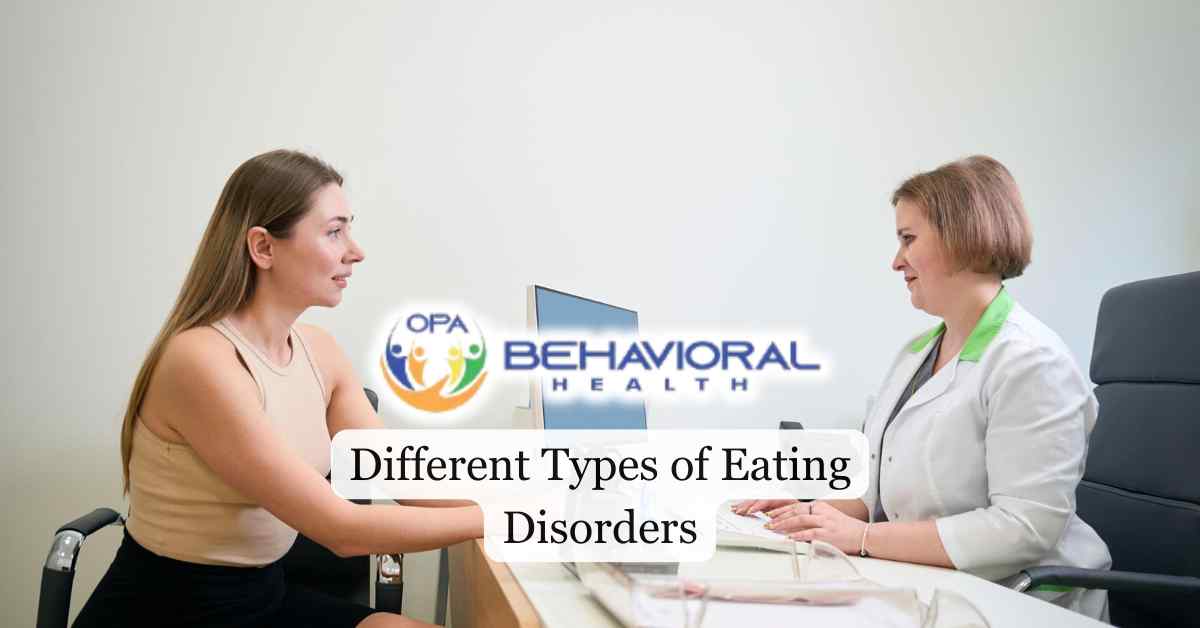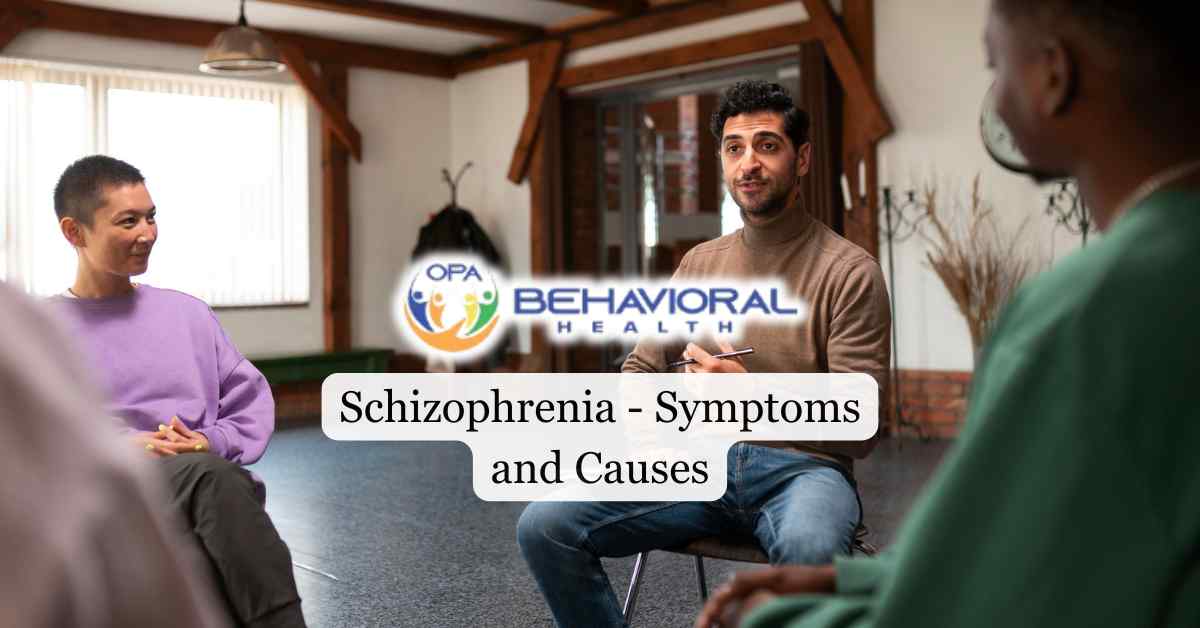Anxiety disorders are a group of mental health conditions characterized by excessive fear, worry, and related behavioral disturbances. While they share common features, such as heightened anxiety and avoidance behaviors, there are several distinct types of anxiety disorders, each with its own diagnostic criteria and treatment approaches.
Understanding the unique features of each anxiety disorder can help individuals and mental health professionals develop targeted interventions to manage symptoms and improve overall functioning.

Generalized Anxiety Disorder (GAD)
When worry consumes your thoughts and infiltrates every aspect of your life, you might be facing Generalized Anxiety Disorder (GAD). GAD affects 3.1% of U.S. adults annually. It’s characterized by excessive and uncontrollable worry about various everyday situations that persists for at least six months.
If you have GAD, you may experience physical symptoms like restlessness, fatigue, muscle tension, and difficulty concentrating. Your anxiety is often disproportionate to the actual likelihood of the feared events occurring, leading to significant impairment in your daily functioning.
Treatment options for GAD typically include cognitive-behavioral therapy (CBT), medication, and lifestyle changes to alleviate symptoms.
It’s important to note that GAD frequently co-occurs with other mental health conditions, such as depression and social anxiety disorder, which can complicate the diagnostic process and treatment approach.
Read more about our anxiety treatment services here:
Panic Disorder
Imagine the terror of suddenly feeling your heart racing, palms sweating, and chest tightening, as if you’re losing control or facing imminent danger, even when there’s no apparent threat. This is the reality for those living with panic disorder, a mental health condition characterized by unexpected and recurrent panic attacks.
These episodes can be incredibly distressing, often accompanied by physical symptoms like trembling, shortness of breath, and a sense of impending doom.
If you’ve experienced panic attacks, you may find yourself avoiding situations where escape seems difficult or help might be unavailable, fearing the onset of another attack. This avoidance behavior can significantly impact your daily life and overall well-being.
Cognitive-behavioral therapy (CBT) has proven to be a valuable tool in managing panic disorder, helping you develop coping strategies and challenge the thoughts and beliefs that fuel your anxiety.
Social Anxiety Disorder
Picture the dread of attending a social gathering, the constant worry of being judged, and the overwhelming desire to avoid interactions altogether. If you’ve experienced these feelings, you may be struggling with Social Anxiety Disorder (SAD). It’s a common anxiety disorder that affects over 12% of U.S. adults, causing an intense fear of social situations.
When you have SAD, intrusive thoughts can consume your mind, making you feel like everyone’s scrutinizing your every move. You might experience physical symptoms like excessive sweating, trembling, and a racing heart. These symptoms can significantly interfere with your daily life, impacting work, school, and personal relationships.
Cognitive-behavioral therapy (CBT) and exposure therapy are often used to help you gradually confront and manage your fears.
Specific Phobias
Facing your fears can be an overwhelming experience, especially when you’re dealing with a specific phobia. If you’ve ever felt an intense, irrational fear of a particular object or situation, you’re not alone. Specific phobias affect approximately 12.5% of U.S. adults at some point in their lives, making them one of the most common anxiety disorders.
When you’re exposed to your phobic stimulus, you may experience physical symptoms like sweating, trembling, rapid heartbeat, and feelings of panic. These reactions can lead to avoidance behavior, where you go to great lengths to steer clear of the feared object or situation, even if you recognize the irrationality of your fear.
Exposure therapy, a gradual and controlled approach to facing your fears, has proven to be highly effective. By confronting your phobia in a safe environment, you can learn to manage your anxiety and improve your quality of life.

Agoraphobia
When you’re struggling with agoraphobia, the world can feel like a daunting and threatening place. You may experience an intense fear of situations where escape might be difficult or help unavailable, leading you to avoid public spaces.
Panic attacks can strike in crowded places, open spaces, or while traveling, severely limiting your ability to function in daily life. It’s estimated that about 1.7% of U.S. adults experience agoraphobia at some point, with a higher prevalence among women.
Symptoms of agoraphobia can include excessive worry about leaving home, feelings of helplessness, and physical symptoms like rapid heartbeat and sweating when faced with triggering situations.
Separation Anxiety Disorder
If you’re struggling with SAD, you may find yourself constantly preoccupied with the thought of losing a major attachment figure, reluctant to be alone, and experiencing nightmares about separation. These symptoms can lead to significant impairment in various areas of your life, such as social interactions and academic performance.
It’s important to recognize that SAD isn’t just a childhood disorder; it can affect adults too. Major life changes, like moving or parental divorce, can trigger the onset of separation anxiety disorder.
Causes and Risk Factors
Genetic factors play a significant role, as studies suggest that inheriting certain genes can increase your susceptibility to anxiety disorders.
Imbalances in brain chemistry, particularly involving neurotransmitters like serotonin and dopamine, are also linked to the development of these conditions.
Environmental stressors, such as exposure to traumatic events like abuse or accidents, can trigger anxiety disorders, especially Post-Traumatic Stress Disorder (PTSD). Chronic stress from personal or professional life situations can also lead to the onset or worsening of anxiety symptoms.
Certain personality traits, including perfectionism or a tendency toward negative thinking, may increase your vulnerability to developing anxiety disorders.
Diagnosis and Treatment
The path to healing begins with a thorough evaluation by a mental health professional, who’ll assess your symptoms, medical history, and the impact of anxiety on your daily life.
They’ll use the DSM-5 criteria to diagnose specific anxiety disorders, ensuring you receive the most appropriate treatment plan.
Cognitive Behavioral Therapy (CBT) is a highly effective treatment for anxiety disorders, helping you identify and change negative thought patterns and behaviors.
You’ll partner with your therapist to develop coping strategies and strengthen your resilience. In some cases, they might suggest medication to help manage more severe symptoms, often combining it with therapy for the best results. OPA Behavioral Health provides anxiety treatment tailored to support you.
Final Thoughts from OPA Behavioral Health
Increased awareness and understanding of anxiety disorders are crucial in reducing stigma and encouraging those affected to seek help. Early intervention and appropriate treatment can help individuals manage their symptoms and improve their well-being. OPA Behavioral Health’s team is ready to provide you with the needed care and support in regards to any form of anxiety or other mental health problems. We’re committed to helping our patient tackle challenging psychiatric disorders in the proper manner.








